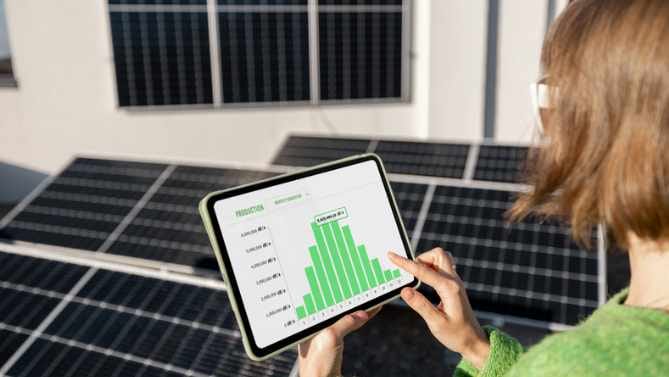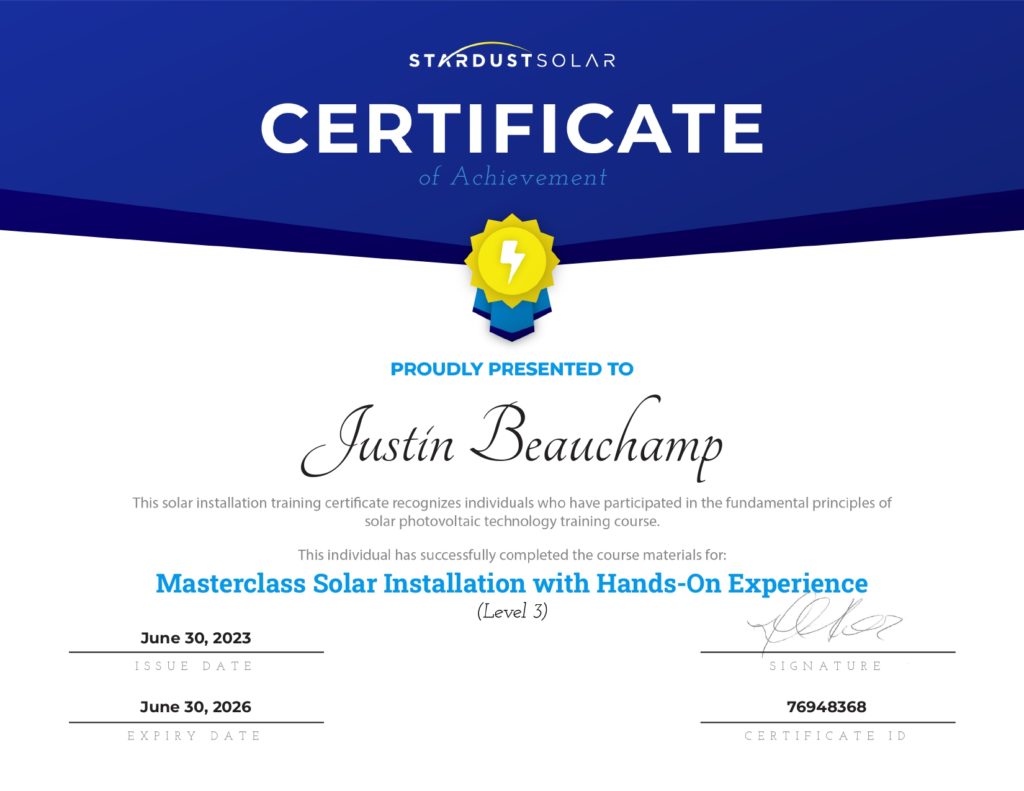As Canadian homeowners seek sustainable and affordable energy solutions, solar power is, without a doubt, a promising option.
According to the Renewable Energy Association, more than 43,000 solar (PV) energy installations on residential, commercial, and industrial rooftops provide power directly to homes and businesses.
Sizing solar power systems requires careful analysis of a household’s energy usage and solar irradiance conditions. However, energy consumption, sunlight, and technical considerations must be balanced to size solar systems for single-person homes.
Expertise from expert installers is just as important as knowing the technical details of solar system sizing. These experts ensure that your solar panel installation Calgary is designed and installed to meet your single-person home’s needs.
Get the best solar panel installation from MAG Solar and enjoy long-term energy savings.
Factors Affecting Energy Consumption
Lifestyle Considerations
- Habits. Energy use is affected by appliance use, temperature, and lighting. Users of energy-intensive appliances like dishwashers and dryers may use more energy.
- Working Hours. The timing of residential energy use can affect consumption. Work-from-home households may use energy more consistently throughout the day than those with traditional working hours.
Size of Home
Larger homes use more energy for heating, cooling, and lighting. More surface area means more heat loss or gain, depending on the climate. With more rooms, larger homes use more energy-consuming appliances and lighting.
Efficiency of Appliances
- Energy-Star Ratings. Energy-star appliances use less energy. These ratings are based on standardized energy efficiency tests.
- User Patterns. Even energy-efficient appliances can waste energy if misused. Operating a dishwasher or washing machine with a few items wastes more energy than waiting until it is full.
Climate and Solar Potential in Calgary
In Calgary, you can expect mild summers and cold winters due to the city’s temperate continental climate. Compared to other areas at the same latitude, the city’s 2,400 annual sunshine hours are quite high. Daily sunshine hours change from season to season, with summer days being longer and winter days being shorter.
| Aspect | Description | Importance |
|
Solar Potential |
PV System Sizing: Determines optimal size based on radiation, efficiency, and demand. |
Essential for determining size, predicting output, and assessing financial viability. |
| Performance Modeling: Predicts output considering degradation and shading. | ||
| Financial Analysis: Assesses viability based on costs, savings, and revenue potential. | ||
|
Local Climate in Sizing |
Winter Considerations: Addressing snow accumulation and panel tilt angles. |
Important for optimizing energy capture, year-round generation, and regulatory compliance. |
| Seasonal Variation: Adjusting system designs and storage capacities to meet fluctuating energy demands. | ||
| Regulatory Compliance: Adherence to local building codes, permitting requirements, and interconnection standards. |
Solar System Calculation: Example for a Calgary Single-Person Home
List all energy-consuming home devices and systems, including lighting, HVAC, appliances, electronics, and hot water to calculate system size. Estimate annual energy usage for each category using manufacturer, government, or energy audit data. Consider seasonal energy demand, such as winter heating and summer cooling, to calculate the home’s annual needs to produce power.
Example System Size Output in Kilowatt-Hours (kWh)
Example 1: Basic Single-Person Home
- Assume a single-person home consumes 8,000 kWh per year.
- A 1 kW system in Calgary could generate 4.3 kWh per day based on the available sunlight.
- What You Need: A 1.86 kW home solar panel can meet the home’s energy needs (8,000 kWh ÷ 4.3 kWh/day).
Example 2: Energy-Efficient Single-Person Household
- Consider an energy-efficient single-person home that consumes 6,000 kWh per year.
- 1 kW solar panels in Calgary could generate 4.2 kWh per day.
- What You Need: A system of 1.43 kW matches the home’s energy usage (6,000 kWh ÷ 4.2 kWh/day).
Solar Power Production in Calgary: Example Data to Back Up Calculations
Calgary enjoys a sunny climate that is ideal for solar power, with long summer days and high solar irradiance levels. Natural Resources Canada reports that Calgary receives around 1,300-1,400 kWh/m² of solar irradiance annually.
To back up our calculations, let us look at specific data on solar irradiance:
- Annual Solar Irradiance: 1,350 kWh/m² (average)
- Average Daily Solar Irradiance: Approximately 3.7 kWh/m²/day (1,350 kWh/m² per year divided by 365 days)
Standards of solar panel efficiency and optimal installation:
- Panel Efficiency: 15% (0.15)
- Daily Energy Production per kW of Installed Capacity: 3.7 kWh/m²/day * 0.15 = 0.555 kWh/day per m²
A single-person home using 10,000 kWh per year:
- Required Daily Energy: 10,000 kWh/year ÷ 365 days/year ≈ 27.4 kWh/day
- Required Solar Panel Area: 27.4 kWh/day ÷ 0.555 kWh/day per m² ≈ 49.37 m²
- System Size: A system size of 7.5 kW (27.4 kWh/day ÷ 3.7 kWh/m²/day) is recommended to meet energy needs.
Understanding Solar Panel Size Calculation Method
- Calculate solar potential using Calgary’s average daily sunlight hours, which may be 4.5 hours.
- You can find out how much power your solar panels produce by measuring their efficiency, usually between fifteen and twenty percent.
- Estimate daily energy production per kW of solar capacity.
- Estimate home energy consumption at 10,000 kWh/year.
- Divide annual consumption by daily kW energy production to determine system size.
What a Solar Installation Will Cost You
| Basic Expenses | Details | Average Cost |
| Solar Panels | Primary component, cost varies based on efficiency, brand, and warranty. | $0.50 to $1.00 per watt |
| Inverter | Convert DC to AC electricity. | $0.10 to $0.40 per watt |
| Mounting and Racking | Hardware to secure panels. | $0.10 to $0.20 per watt |
| Balance of System (BOS) | Includes wiring, switches, and other components. | $0.10 to $0.30 per watt |
| Labour | Professional installation | $0.50 to $1.00 per watt |
| Engineering and Design | The total system design costs. | $500 to $2,000 |
| Permits and Inspections | Required to meet codes and safety standards. | $500 to $2,000 |
| Monitoring Systems | Optional systems to track production and usage. | $300 to $700 |
Solar System Upgrade: When and Why to Think About It
Signs That It’s Time for an Upgrade
- Household expansion. A solar panel system may not meet your energy needs if your household grows or you add energy-intensive appliances like electric vehicles or HVAC systems.
- Lifestyle shifts. Lifestyle changes like working from home can increase electricity consumption.
- Performance decline. Most solar panels lose 0.5% to 1% efficiency annually. Power may decrease significantly if your system is over 10-15 years old.
- Inverter issues. Inverters generally need replacement after 10-15 years, unlike panels. Using old inverters may reduce system performance or require frequent maintenance.
- Outdated technology. Suboptimal energy production may result from older systems’ inefficiency and capabilities.
- Pricey repairs. Systems may need more frequent and expensive repairs as they age. It may be cheaper to upgrade than repair old equipment.
Upgrade Options
Adding Panels
- Expanding system. Adding panels to your system can meet higher energy demands if you have roof space or land.
- Microinverters or Power Optimizers. These can improve panel management, especially if there are shading or orientation issues.
Battery Storage
Battery storage lets you use daytime energy at night or during grid outages, increasing energy independence. Batteries can lower electricity bills by supplying power during peak usage times.
Inverter Replacement
System performance improves with newer inverters’ higher efficiency and warranties. Modern inverters have remote monitoring, grid interaction, and battery storage integration.
Upgrading to Better Panels
- Higher Output. The same space can be used to generate more power with newer, more efficient panels.
- Technological Advances. Upgrade to bifacial cells, which capture light from both sides, or half-cut cells, which perform better and last longer.
Factors to Consider for Future Proofing
Modern solar panels are more efficient and perform better in low light. Modernizing technology boosts energy production. Future-proofing may involve installing smart home systems for energy management and automation.
- Modular Systems. Consider creating an expandable system. This could involve modular battery systems or roof space for more panels.
- Flexible Configurations. Ensure your inverter and electrical system can handle more capacity or storage without major changes.
- Net Metering Policies. Net metering and feed-in tariff changes can affect the economic benefits of upgrading your system.
- Energy Costs. Think about energy price trends. Generating and storing power becomes more profitable as electricity rates rise.
- Sustainability Goals. Upgrades reduce carbon emissions, supporting personal or organizational sustainability goals.
- Grid Stability. Renewable energy production and storage improve grid stability and sustainability.
Choose These Effective Solar Panels
1. Longi 410 – 54 Cell
The 54-Cell Longi 410 solar module offers first-rate performance. The latest Low LID Mono PERC technology ensures minimal power degradation and superior energy conversion in these panels. Key benefits:
- High Performance: Enjoy 0–3% power tolerance for consistent energy output.
- Durability: Strongly resistant to extreme weather conditions and UV rays. .
- Low-Light Efficiency: Maintain 97.5% efficiency in low light.
- Thermal Resilience: Reduces hot spots by operating efficiently at lower temperatures.
2. Longi 445 Bi-Facial Solar Panels
Increase solar energy production with Longi 445 Bi-Facial Solar Panels for efficiency and durability:
- High Efficiency: Generate more electricity from the same surface with 22% module efficiency.
- Strong Weatherproofing: Built to withstand 5400Pa snow and 3000Pa wind loads with a high-quality material.
Cost-Effective: Reducing electricity costs and increasing energy yields makes it a smart investment.

Get the Right System Size With Expert Solar Installers
Solar energy provides a sustainable and affordable energy source for single-person homeowners. Energy demands, aging equipment, and frequent maintenance may indicate a system upgrade. Installing the right system size improves performance and future-proofs your investment.
Single-person homeowners should consult with professional installers from a reliable solar company to assess their needs and take advantage of solar power. MAG Solar can help homeowners design their systems for maximum financial and environmental returns.
Frequently Asked Questions
How do weather patterns affect solar power?
Solar power generation is mainly affected by weather patterns:
- Cloud Cover. Reduces solar panel output by reducing direct sunlight. Panels generate electricity from diffuse light, but less efficiently.
- Snow. Solar panels can be completely covered in snow. To slide snow off panels, tilt them or manually clear them.
- Temperature. Cooler temperatures improve solar panel performance. Since most panels have a negative temperature coefficient, high temperatures reduce efficiency.
- Seasonal Variations. Winters are short, and summers are long in Calgary due to high solar irradiance. Winter energy production is lower than summer.
How can solar homeowners benefit from net metering?
Solar homeowners can hook up their panels to the power grid through net metering. The excess electricity from their solar panels is fed back into the grid, running their electricity meter backward. This excess energy goes to their electric bill.
- If their solar panels are not producing enough energy at night or on cloudy days, they can use these credits to offset grid electricity costs.
- Solar homeowners can store excess energy on the grid as a virtual battery with net metering.
- This arrangement lowers solar homeowners’ electricity costs and boosts their solar panel installations’ profitability.
- Using distributed renewable energy resources reduces peak demand strain and stabilizes the grid.
Are solar panels a good investment for a single-person home?
Yes, installing solar panels can boost any home’s value by providing energy independence, reduced greenhouse gas emissions, and savings to potential buyers. Research shows that houses that have solar panels installed by solar companies sell more quickly and for a higher price than homes without. Solar panels may also increase a property’s resale value and curb appeal.

